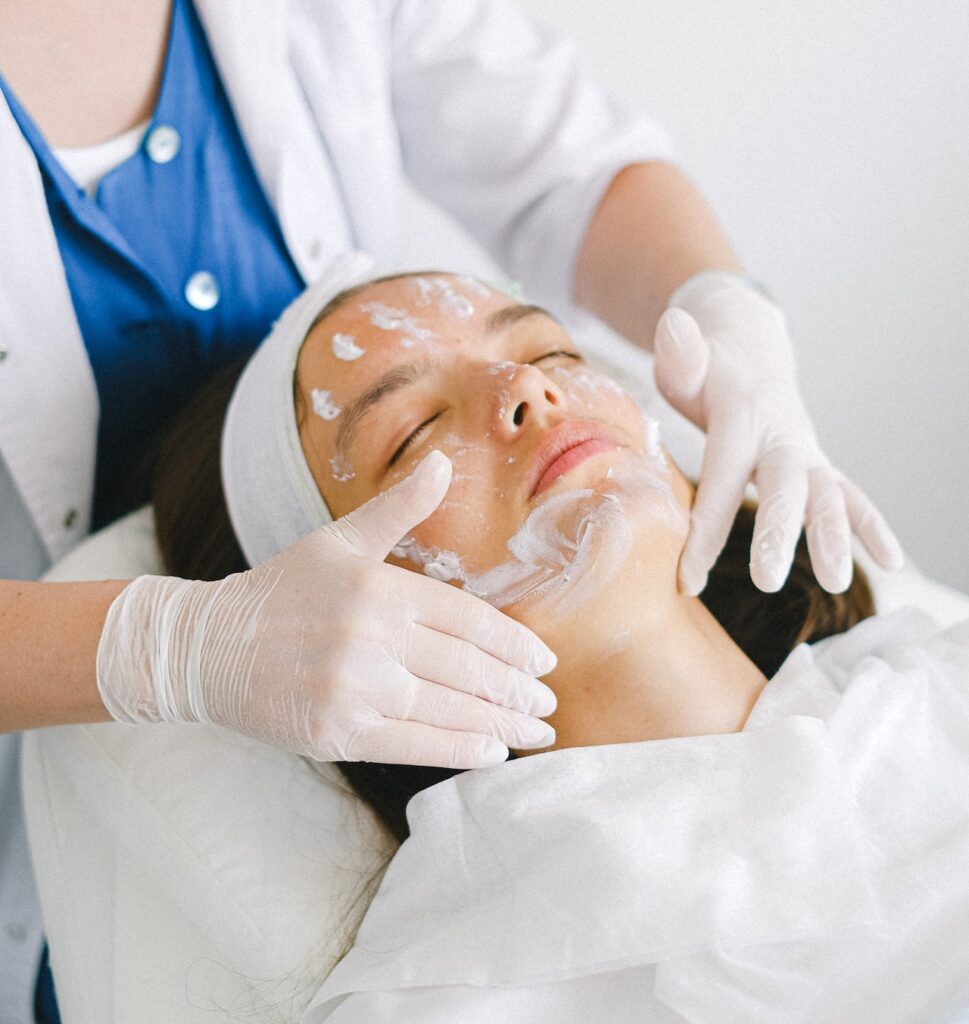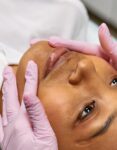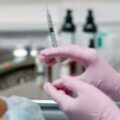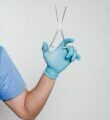Chemical peel is one of my favourite treatments. It’s a method in which an acid (one or a mix) is applied to the skin to remove the top layers. This is why a peel can smooth the texture, brighten and improve the skin tone incredibly. It will also improve the appearance of pores, fine lines and eliminate pigmentation or acne. This treatment can be used on different parts of the body – face, neck, décolleté, back, hands, there are even special peels for the lip and genital area.
There are multiple types and strengths of CHP. Cosmetologists work with the weaker ones, only doctors (dermatologists and plastic surgeons) work with the stronger ones. Like any procedure, it has its fans, and those who should avoid it. Want to know more about this procedure? Read on!
A consultation should always take place before a chemical peel to determine if this treatment is suitable for you or if there is a better alternative. If doctor or beautician does not ask you about the sensitivity and nature of your skin, your experience with active ingredients and treatments, and just wants to sell you a universal miracle treatment as quickly as possible, hands off (this also applies to lasers!).
For whom it is not suitable?
If you are prone to skin irritation, redness and rosacea, atopic eczema, or have a skin condition with an autoimmune background, chemical peels are probably not the right choice for you. After all, there are a wide variety of skin-improving treatments available nowadays. 🙂
During pregnancy, you can undergo light peels as part of your facial. Wait for the stronger, medical grade ones until after you give birth. We often wait until after breastfeeding is over to let hormone levels stabilize.
If you want to have a peel, your skin must not be tanned. Avoid the sun for a month after the peel. Wearing sunscreen all year around is a necessity, especially if you’re dealing with wrinkles and pigmentation. Other contraindications are acute infectious disease, skin infection at the application site, and unhealed herpes. Clients who suffer from herpes (cold sores) are pre-medicated with antivirals prior to treatment.

How to prepare for the peeling?
If you haven’t had experience with any AHAs or BHAs before, it’s a good idea to gradually incorporate them into your routine for about 3-6 months before the chemical peel itself. You’ll see how your skin reacts to them, and on the other hand, they can help so much that you won’t need a peel, or less sessions may be enough.
If acids don’t benefit your skin at all (you react to them with a rash, they irritate you), a chemical peel is very probably not suitable for you. Using weaker acids in your pre-peel routine has a benefit – it’s called hardening (toughening) the skin. However, a week before the actual stronger peel procedure, your doctor may recommend that you take all actives (AHAs, BHAs and PHAs, benzoyl peroxide and retinoids) out of your routine so that your skin is safely prepared.
How does the peeling take place?
After thorough cleansing, a special acid is applied to the dry skin with a cosmetic brush. It is left on the skin for a few seconds to minutes, or not washed off at all, and you go home. In case it is washed off, the skin is then moisturised with a protective healing cream.
Simona_derm Tip: Schedule your peel so that you can go straight home after the treatment. If you feel uncomfortable at the thought of walking home, take a lift or book a taxi. A clean mask is a great cover-up – it will hide half of your face without any problems. 🙂
What will happen to my skin?
Some peels sting a little during application. Don’t worry, a peel should never burn too much! If you feel an unbearable burning sensation, let your doctor or aesthetician know right away. After neutralization (washing off the substance), this sensation will quickly subside. You may feel a slight tingling, tension and pulling of the skin, but these sensations will also disappear when the soothing cream is applied.
After the treatment, your skin is pink to slightly red. Within 2-3 days it fades and begins to peel. This peeling can vary in intensity. Pigment spots may darken, but don’t worry, they will peel off in the following days. Do not help this peeling, do not scrape off the scales. They will peel from the skin on their own at the right time. This process can take a few days to two weeks, and can vary in intensity.
Tip from Simon_derm: Some people peel like a snake, some people don’t peel at all. It all depends on the substance used, the strength of the peel and the individual characteristics of the skin. Take a “before and after” photo of yourself using the same light, so you can objectively assess the result of the treatment.

What is the best aftercare?
The day after the peel, don’t wear make-up at all and don’t touch your skin with your hands unnecessarily. Do not exercise and avoid dirty and dusty environments. On the following days, gently cleanse your skin in the morning and evening, but do not use any tools to avoid unnecessary irritation. Minimise your routine to the most necessary – products for sensitive skin which helps to regenerate and restore the skin’s barrier function ( those containing panthenol, centella – “CICA”, etc.) are ideal. Use UV protection whenever you go outdoors or stay near a window with intense sunlight.
Simona_derm Tip: My favorite UV protection is sheer physical protection SPF 50 from NeoStrata. This SPF gives you a solid UV protection, doesn’t sting on the skin, and is lightly tinted to help you get through the first few days without makeup. The tinted SPF also provides even better protection against pigmentation.
When to include actives in routine?
Once you feel that your skin is restored. This is usually when the redness has subsided and the last of the scales have peeled off. Add the actives you have been using gradually, as you did when you first started using them. This is especially the case with stronger medical peels.
Simona_derm Tip: If you feel that your skin very much benefits from the restorative creams and other products you used in the after-care period, feel free to continue using them.
Does the peeling need to be repeated?
Sometimes (especially in the case of acne) a series of treatments may be recommended. These treatments have their own fans. However, if you don’t have a fine-tuned daily routine, save yourself the money. Get your daily skincare routine in order first, then consider exfoliating. If you don’t know what to do, book an appointment with me for a Skincare consultation, I’d be happy to help. 🙂
If you struggle with pigmentation, the number of chemical peels depends on the effect of each treatment. Some people need just one, some people need 2-3 sessions.
As I wrote before, there are more types of chemical peels (acid, retinol). I like to use mandelic acid, glycolic acid (50-70%) and trichloroacetic acid – TCA (30%). I often see better effect after a medical TCA peel (30% or more) than after a fractional CO2 laser. The special treatment for melasma, Cosmelan peel, also has its keen supporters. I do chemical peels from late fall to early spring.
My advice outside the office
In this article, I’ve written useful information you should know if you’re considering a chemical peel. Your doctor will help you determine if this treatment is right for you after a thorough consultation. Choose very carefully and put yourself in the hands of an experienced professional who will take the time to explain the whole process to you or suggest a suitable alternative. This professional must have experience with the skin, so I recommend looking for an experienced dermatologist or plastic surgeon. Weaker peels are also done by trained aestheticians, but choose carefully there as well.
If you don’t know which treatment is best for you and want advice, book an hour online video call with me to discuss everything in detail. If you are still troubled by active acne or are concerned about another skin problem, a Skincare package is a good option for you. I will be looking forward to seeing you! 🙂





